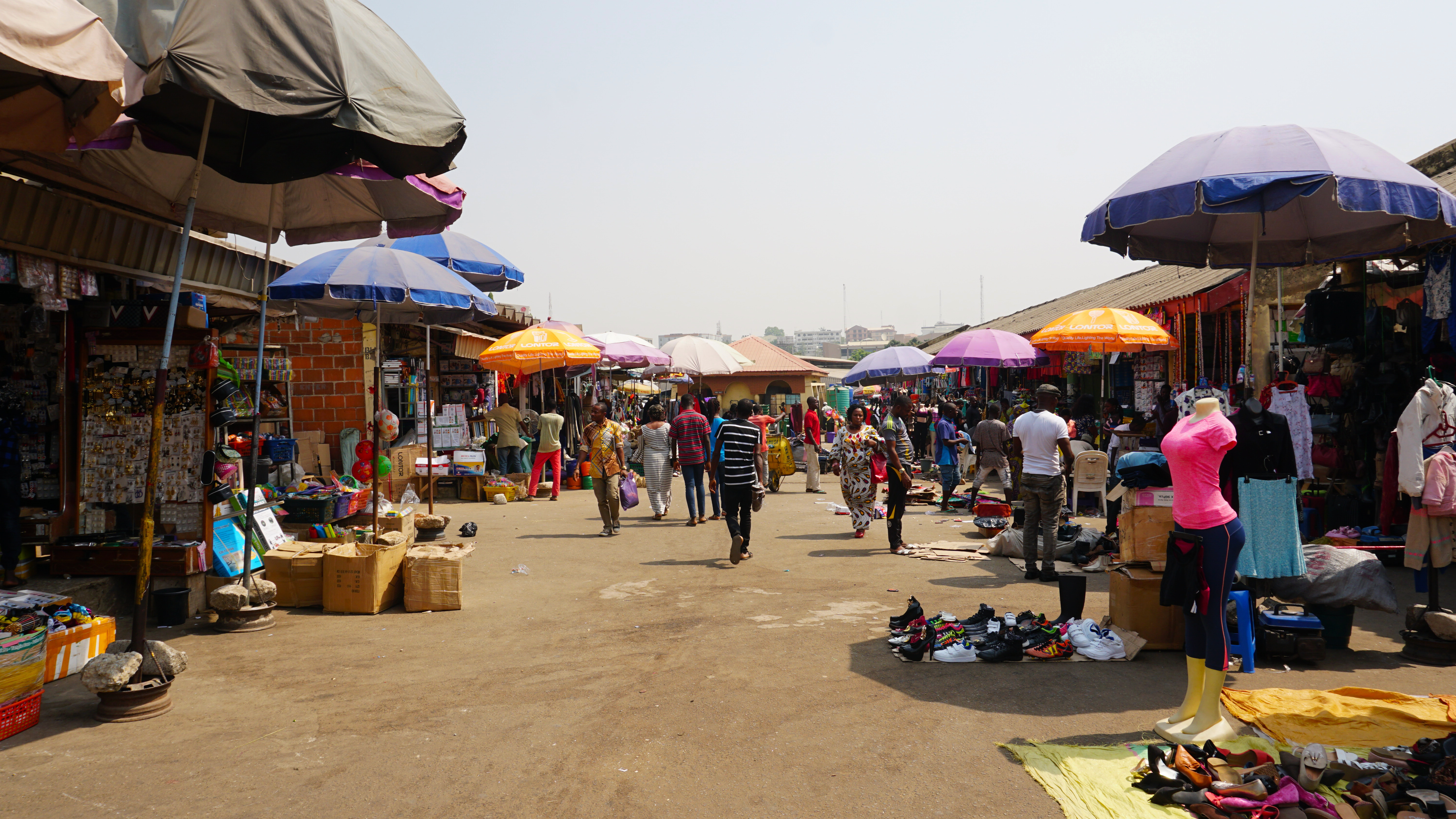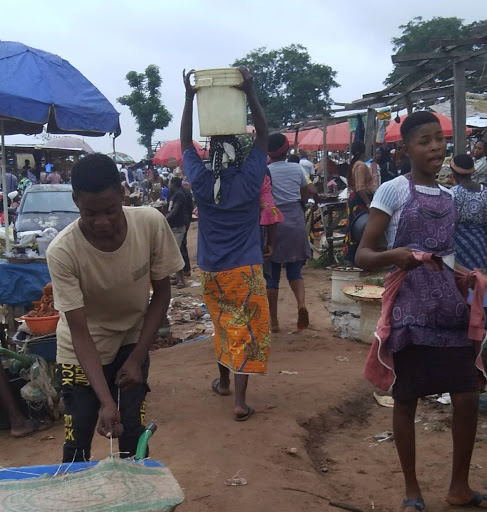
The year 2020 will be remembered as the "Quarantine year," the year millions of people around the world had to remain indoors for several months, with over 700 thousand people dead as a result of Covid-19.
Covid-19 is a respiratory disease caused by a novel coronavirus strain that was first reported in Wuhan, China. Since then it has spread to all corners of the world with only a handful of countries having no Covid-19 case. Nigeria confirmed its first Covid-19 case on the 27th of February, 2020 [NCDC]. Since then the number of cases has grown to over 50,000 confirmed cases and over 1,000 deaths [NCDC].
Covid-19 is communicable and preventive measures outlined by the World Health Organization include wearing a face mask, maintaining social distance and washing hands regularly.
It is therefore imperative for people around the world to have access to clean water. Water is not only a basic human need but can save a life in these circumstances.
Although water covers 71% of the earth’s surface, a large percentage of the water is salty seawater or trapped in glaciers or underground, leaving only 0.3% usable by man. With an estimate of 785 million people around the world lacking access to clean water. It is no wonder then that clean water and sanitation is among the United Nations Sustainable Development Goals (SDG 6).
Gosa Market, Abuja Case Study
As businesses, religious places, schools and borders open up amidst the virus, I visited a community in the Federal Capital Territory famous for its Friday market, Gosa market. By 7am, market activities were in full throttle as man, animal and vehicle made their way in and out of the market.
Gosa market is not like the big markets in Abuja, such as Wuse or Garki market, it is surrounded by farms and the roads are not tarred. One can find driving in to be an arduous task with roads riddled with potholes. The rains have not helped, as now one is unsure of the depths of these potholes and must, therefore, drive carefully.
The market does not have a gate but market task-force is stationed at every possible entrance collecting entrance fees. As is the norm these days, I asked if there are facilities where I could wash my hands. The answer I got was no. The market itself did not have any water system at all, or public toilets as is common in such establishments. The water used in the market comes from the surrounding farms.
Women could be seen moving back and forth across the market with buckets or wide basins on their heads, carrying water. This is their business. They fetch the waters from the surrounding farms that have a borehole water system and supply them to the meat areas and any other area where water is needed.
In modern markets, the poultry sections have taps where the chicken can be boiled, de-feathered and washed. Here, the women who fetch water have set up a mini-station close to the poultry section to provide water to those who kill and prepare the animals. They work tirelessly to ensure water is not lacking and even keep storages of water waiting.
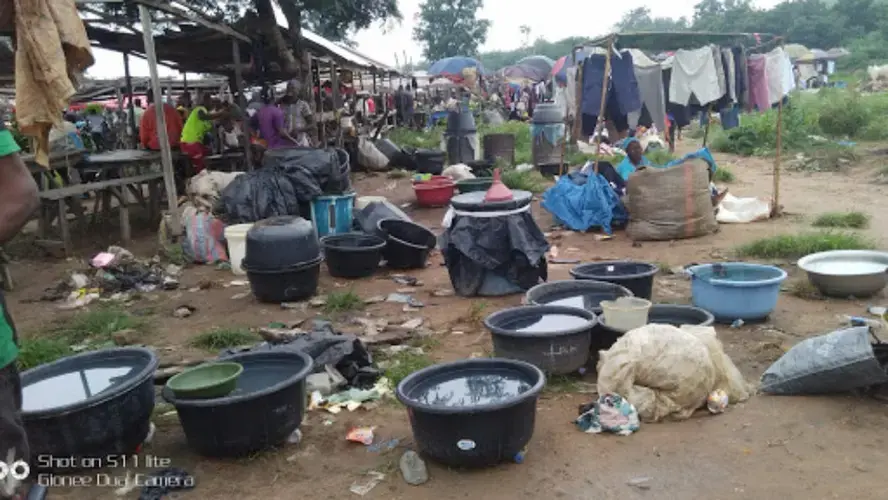
I noticed that those who need water for one reason or the other, especially fruit and meat sellers, had their own basins of water, which they kept close. They bought water into these basins or even fetched the water themselves from the farms. The market is indeed for the strong hearted. They do not have access to basic amenities (toilets, water or good roads). People in the market have to resort to using surrounding bushes to answer nature’s call and have to buy water to wash their hands.
With no water or sanitation facilities available in the market, there is high risk of spread of Covid-19 and other communicable diseases. As with crowded market paces, social distancing is difficult to maintain. There is therefore no preventive measure in place and sellers and customers are at risk of contracting diseases.
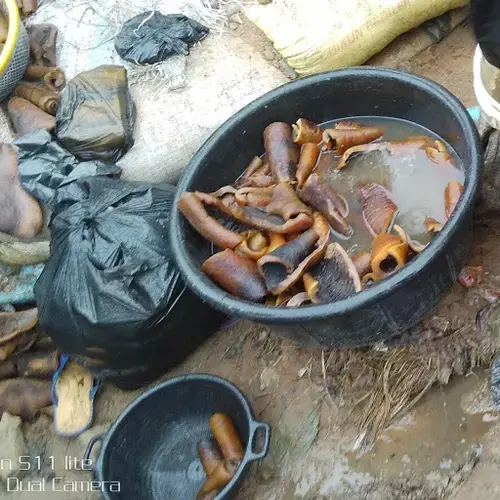
Water Poverty in Nigeria
In the 2018 Nigeria Demographic and Health Survey, 33% of Nigerians have water systems on their premises, with 54.1% obtaining water from distances that take less than 30 minutes for one round trip, and 12.8% travelling for more than 30 minutes a round trip to obtain water. That is 66.9% of households that do not have access to water on their premises.
In the Federal Capital Territory, 35.6% of households have water facilities on their premises, while 47.2% travel less than 30 minutes to get water. In the economic hub of the nation—Lagos State—52.5% of households have water facilities on their premises. Kaduna State records the highest number of on-premise water facilities, with 76.8% of households, while Yobe has the smallest percentage of households with water on their premises (only 8.6%).
It is therefore impossible to expect these individuals to maintain social distance due to the pandemic because they have to leave their premises to meet their basic water needs. Their water source could be a community tap or well and this only encourages individuals to crowd that source with little regard for social distancing or other safety measures.
In Nigeria, we even have a name for those who hawk water, Mai ruwas. The men often make use of large drawing carts with which they can carry twelve 20-litre rubbers while the women carry the water on their heads.
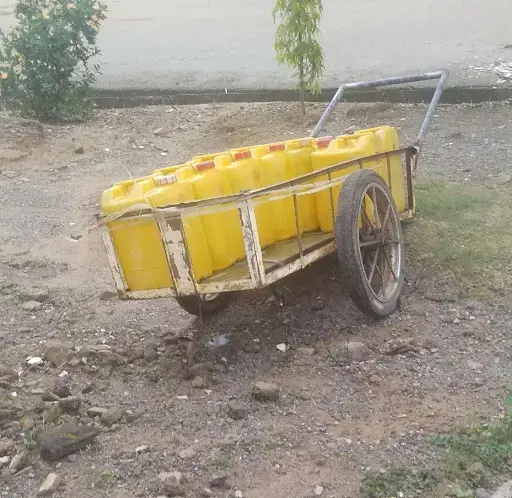
The Nigerian 2018 Demographic and Health Survey also estimates that 31.9% of Nigerians do not use water, soap or any cleansing agent to wash their hands. That is 31.9% of Nigerians vulnerable to the Covid-19 pandemic or other infectious diseases.
If individuals do not even have access to water facilities, there is no need encouraging them to wash their hands because they simply cannot. If an outbreak of Covid-19 occurs in these areas, the residents are ill-prepared to protect themselves against infection.
While the outbreak of Covid-19 underscores the importance of access to clean water facilities, there are numerous diseases that have been around for a long time as a result of unclean water.
Health Implications of Unclean Water
Cholera, an infectious disease caused by the vibrio cholerae organism, is contracted by contaminated water or food causing diarrhea, which eventually leads to death. Diarrhea and dysentery are common results of ingesting contaminated water or food. Swimming in polluted waters can lead to Schistosomiasis, caused by worms commonly spread by freshwater snails in polluted water.
According to the World malaria report 2019, Africa accounts for 93% of malaria cases worldwide and 94% of malaria deaths, with Nigeria accounting for 25% of malaria cases worldwide. The anopheles mosquito—which carries the malaria-causing organism—breeds in polluted environments and water. Therefore, living close to polluted water is detrimental to the health of individuals.
The effects of water poverty is not only detrimental to health but also to the livelihood of individuals, especially women and children. The 2012 United Nations MDG report estimated that women and girls spend over 40 billion hours a year making trips to get water, a task that fell to women and girls in Sub-Saharan Africa over 70% of the time. It is so dire in some cases that these young girls do not go to school because they are fetching water.
Lack of clean water and good sanitation facilities impact the menstrual health of our women and girls. As a young woman myself, I cannot imagine the hard lives these women and girls live through during their period. How do they wash and where? Do they have to go to an open stream or trek long distances to get water?
Causes of Water Scarcity in Nigeria
The causes of water scarcity in Nigeria vary across the regions. In the North, the weather is very hot, there is little rainfall and the ground is often dry and hard. The South experiences large amounts of rainfall throughout the year.
The South-South region is a swampy area filled with creeks and rivers, it is also the hub of exploration and drilling for oil, causing most of its waters to be polluted and unsafe for man and animal alike. The fishing communities in the region have suffered not only a loss of water but a loss of livelihood too.
Across the country, waste management is a big issue. Proper segregation of waste is not practised in many regions of the country and only a few states have good waste disposal practices and agencies. In Port Harcourt, one of the main cities of the country, I observed that residents dispose of waste in the middle of the road in the evenings, while the waste agency makes rounds in the morning to gather the waste. This is especially common in areas such as Mgbuogba, Choba and Rumuosi, which lie across the East-West road. However, some areas have their waste laid out far into the afternoon.
Water scarcity can therefore be a result of:
- Inadequate physical water bodies or absence of rainfall
- High cost/expense to transport water from main sources to people
To meet their water needs, many have resorted to drilling their own boreholes, digging wells or collecting rainwater and water is often an individual amenity. The most prevalent source of water for most houses in urban areas is the borehole system. This method has been adapted in many rural areas by those who can afford it. The government provides water aid to communities by providing public water systems such as taps or wells for various communities.
Recommendation
With more households having access to improved water, we must not rest until 100% of our population have access to improved water facilities.
Improved water facilities include piped household water connection, public standpipe, borehole; protected dug well, protected spring and rainwater collection. However, water from these improved sources are not always clean and appropriate water treatment is necessary to ensure good health of the populace.
Communities can collaborate to build a central borehole system, which can then be connected to households to provide them with water.
The water facilities put in place due to Covid-19 should also be maintained and not allowed to fall to rot. Advocacy for improved access to water across communities is also important to ensure we reach all parts of the nation.
To effectively battle water poverty, the environment should be taken into consideration to ensure that any water facility installed appropriately suits the region, thereby ensuring the longevity of the project.
Conclusion
We can end water poverty, one household at a time, one community at a time. As with any other problems facing our nation, we cannot leave all work for the government. Through collaborations and partnership, it can be achieved.
References
Kimberly Mullen, CPG for National Ground Water Association
OpenAFRICA by Code for Africa Datasets
National Population Commission (NPC) [Nigeria] and ICF. 2019. Nigeria Demographic and Health Survey 2018. Abuja, Nigeria, and Rockville, Maryland, USA: NPC and ICF.
Nigerian Forum for Agricultural Advisory Services
World Health Organization World malaria report 2019
United Nations Millennium Development Goals Report 2012
The Nigeria Center for Disease Control offical website
The Joint Monitoring Programme report, "Progress on drinking water, sanitation and hygiene: 2017 update and Sustainable Development Goal baselines"
This story was supported by Code for Africa’s West Africa Data Literacy program and the Pulitzer Center.
COVID-19 Update: The connection between local and global issues–the Pulitzer Center's long standing mantra–has, sadly, never been more evident. We are uniquely positioned to serve the journalists, news media organizations, schools, and universities we partner with by continuing to advance our core mission: enabling great journalism and education about underreported and systemic issues that resonate now–and continue to have relevance in times ahead. We believe that this is a moment for decisive action. Learn more about the steps we are taking.

